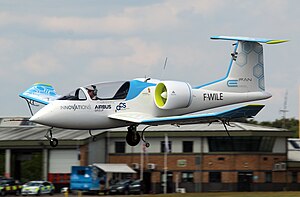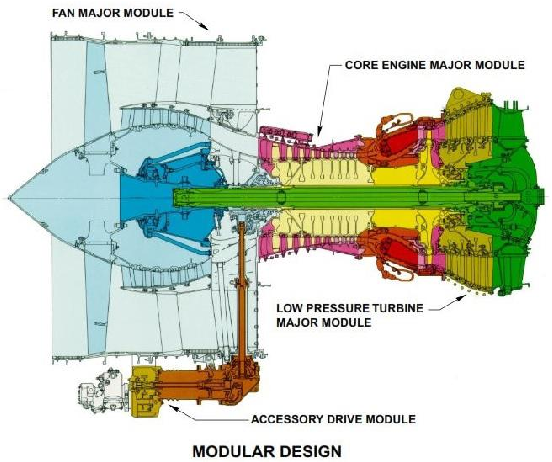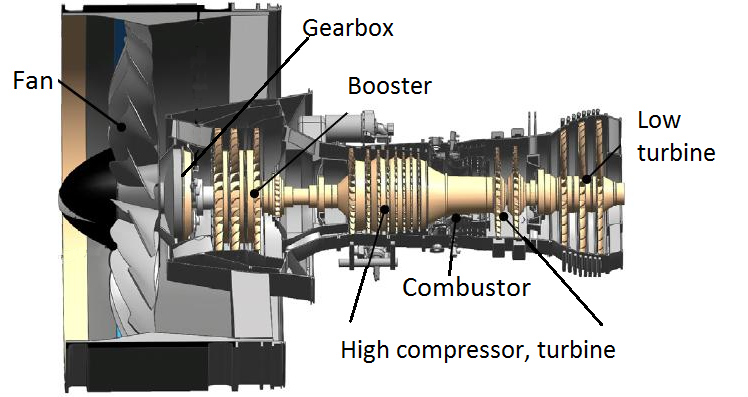Leeham News and Analysis
There's more to real news than a news release.
Bjorn’s Corner: Air Transport’s route to 2050. Part 2.
October 24, 2024, ©. Leeham News: We do a Corner series about the state of developments to replace or improve hydrocarbon propulsion concepts for Air Transport. We will find that development has been very slow.
We don’t have, and will not have, a certified and produced aircraft that can transport passengers using anything but classical propulsion concepts this side of 2028 and probably 2030 if we put the bar above five passengers.
This is 14 years after the flight of the Airbus E-Fan in 2014, which started a multitude of studies and projects to explore new, more environmentally friendly ways to propel aircraft.
Why is the progress so slow? Normal aircraft development takes seven to a maximum of nine years?
Heart Aerospace’s revised ES-30, Part 3. UPDATED
Subscription required
By Bjorn Fehrm
October 24, 2024, © Leeham News: We analyze Heart Aerospace’s latest evolution of the hybrid ES-30. The latest version, presented in spring 2024, is a parallel hybrid, putting gas turbine turboprop engines outside the electric motor engines.
After examining what such a parallel hybrid system means for aircraft dimensions and masses, we now fly the aircraft on a typical US short-haul route through our Aircraft Performance and Cost Model (APCM) to assess its operational performance.
Does the ES-30 make operational sense for an airline that needs a short-haul feeder?
Summary:
- The parallel hybrid architecture gives the ES-30 certain operational flexibility to fly routes over 100nm, making it possible to replace present 30 seaters on such short routes.
- However, the operational costs are considerably higher than today’s 30-seaters. As always, the problem is the battery costs.
- UPDATE: Heart Aerospace contacted us after the article was published. The article has been complemented with their information.
Heart Aerospace’s revised ES-30, Part 2
Subscription required
By Bjorn Fehrm
October 17, 2024, © Leeham News: We analyze Heart Aerospace’s latest evolution of the hybrid ES-30 (bottom aircraft in the picture), which replaces the original battery-based 19-seater (top aircraft) and the original ES-30 (mid aircraft).
The latest version, presented in spring 2024, is a parallel hybrid, putting gas turbine turboprop engines outside the electric motors. What are the advantages of the parallel hybrid version, and will it make the Heart ES-30 project more likely to succeed?
We use our Aircraft Performance and Cost Model (APCM) to understand the design choices and the costs involved.
Summary:
- The latest revision of the Heart Aerospace hybrid electric aircraft, the ES-30, takes the hybrid architecture from a serial to a parallel system. It simplifies the architecture.
- Does the revised ES-30 make airline operational sense? We analyze this using our Aircraft Performance and Cost Model.
Bjorn’s Corner: New engine development. Part 28. Wrapup.
October 11, 2024, ©. Leeham News: We have done an article series on why engine development takes longer than airframe development. Part of the reason is that advancements in engine technology can deliver considerably higher fuel consumption reductions than airframe advancements.
The change of engines for the A320 series and 737 MAX delivered a 15% improvement in engine efficiency. In contrast, the airframe improvement was less than half, mainly by stacking cabin seats closer together.
Bjorn’s Corner: New engine development. Part 26. New versus old, Trent 1000 vs. XWB
September 27, 2024, ©. Leeham News: We do an article series about engine development and why it has longer timelines than airframe development. It also carries larger risks of product maturity problems when it enters service than the airframe of an airliner.
In our look at examples of recent developments with problems and these put in a historical perspective, looking at the reliability and durability of its predecessor we compare the Rolls-Royce Trent 1000 for the Boeing 787 to the Trent XWB for the Airbus A350.
Heart Aerospace’s revised ES-30
Subscription required
By Bjorn Fehrm
September 26, 2024, © Leeham News: Heart Aerospace has revised its environmentally friendly aircraft for the third time. The variants started in September 2020, when Heart presented an all-electric, battery-based 19-seat airliner that should test fly by now and be available in 2026, Figure 1, top aircraft.
Two years later, in September 2022, it all changed. The aircraft was changed to a 30-seater with a serial hybrid propulsion system using turboextenders to increase the operational range, Figure 1, aircraft two.
After another 20 months, the configuration changed again to the third iteration in Figure 1, which will fly in prototype in 2026 and be available to airlines in 2029.
In an article series, we explain the reasons for these changes and analyze whether the changes in the aircraft have increased the likelihood of the ES-30 entering the market in 2029.

Figure 1. The Heart Aerospace regional airliner series. Top, the ES-19, then the ES-30, and finally, the revised ES-30. Source: Heart Aerospace.
Summary:
- Heart Aerospace has followed the typical trajectory for an electric aircraft startup.
- It begins with an all-electric, battery-based airliner that will change regional flying.
- Gradually, reality sets in, and all-battery architecture becomes a serial hybrid and, finally, a parallel hybrid.
- We analyze if the evolution trail increases the chances we will fly on Heart Aerospace airliners come 2030.
Bjorn’s Corner: New engine development. Part 25. New versus old, CFM56 vs. LEAP
September 20, 2024, ©. Leeham News: We do an article series about engine development and why it has longer timelines than airframe development. It also carries larger risks of product maturity problems when it enters service than the airframe of an airliner.
In our look at examples of recent developments with problems and these put in a historical perspective, we compare the CFM56 to the LEAP, comparing their reliability and durability.
Bjorn’s Corner: New engine development. Part 24. New versus old, GTF versus V2500
September 13, 2024, ©. Leeham News: We do an article series about engine development and why it has longer timelines than airframe development. It also carries larger risks of product maturity problems when it enters service than the airframe of an airliner.
We have covered the engine’s different parts and their technology challenges. We now look at some examples of recent developments with problems and put them in a historical perspective.
Bjorn’s Corner: New engine development. Part 23. Development risks.
September 30, 2024, ©. Leeham News: We do an article series about engine development and why it has longer timelines than airframe development. It also carries larger risks of product maturity problems when it enters service than the airframe of an airliner.
We have covered the parts of an engine that involve challenging technology and which decide its reliability (dispatch consistency) and durability (time on wing). Now, we discuss why modern engine design is more challenging regarding these parameters than airframe design.
Bjorn’s Corner: New engine development. Part 22. High Turbine technologies.
August 30, 2024, ©. Leeham News: We do an article series about engine development and why it has longer timelines than airframe development. It also carries larger risks of product maturity problems when it enters service than the airframe of an airliner.
We reached the turbine part on our way through the engine, where we last looked at high-pressure turbine temperatures. It’s the most stressed part of the engine and, in most cases, decides its durability. To understand why, we look closer at turbine technologies.










